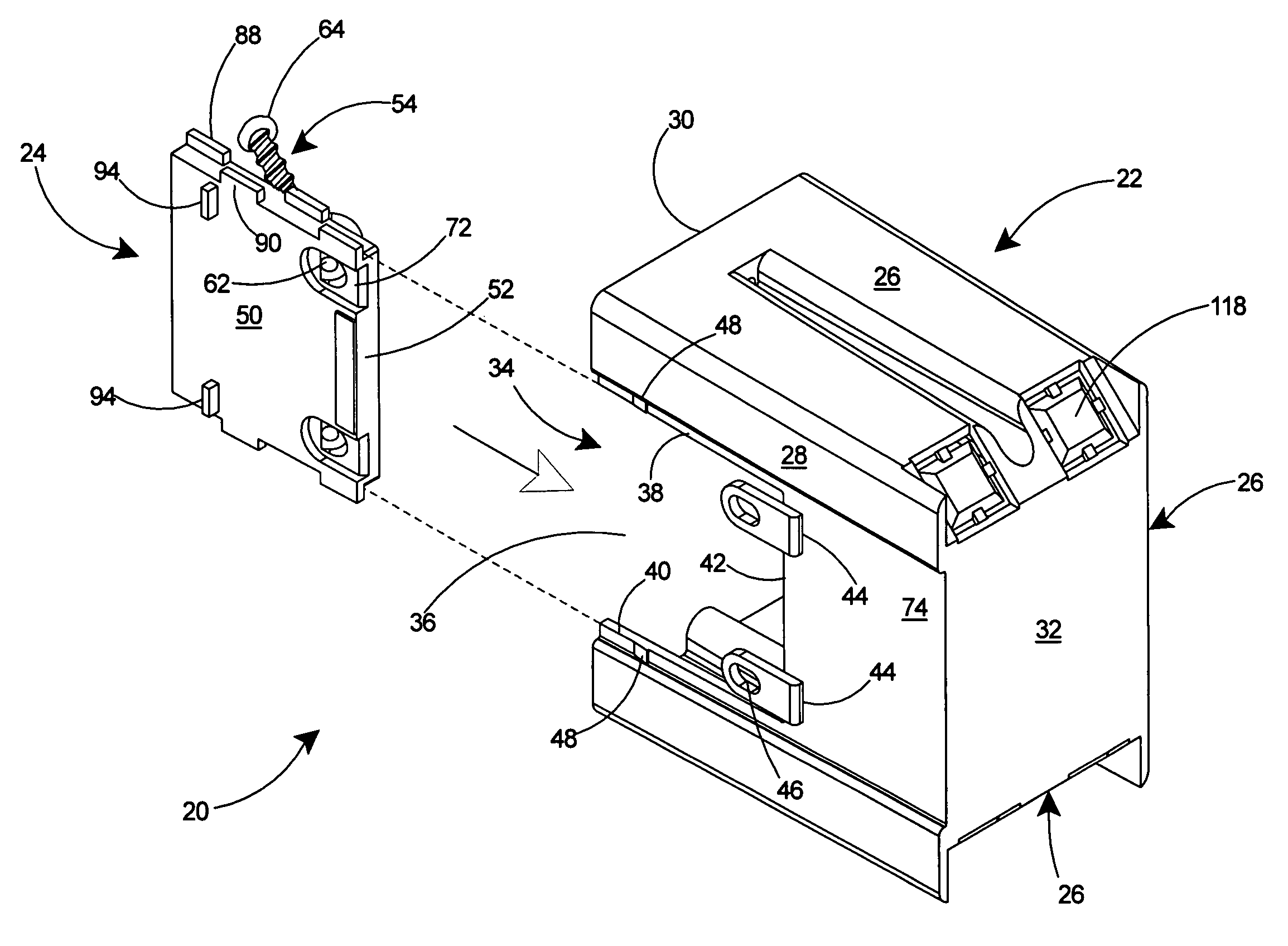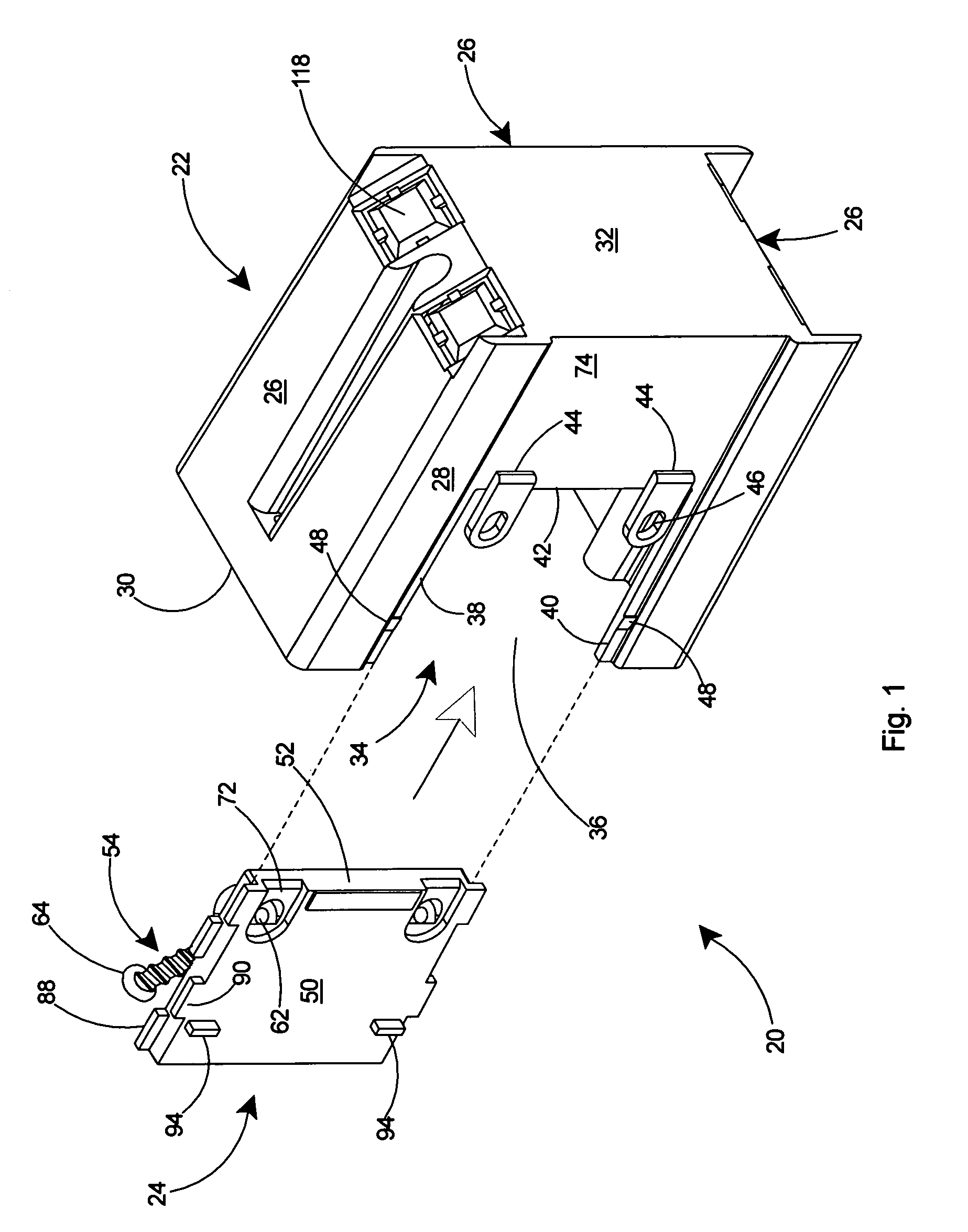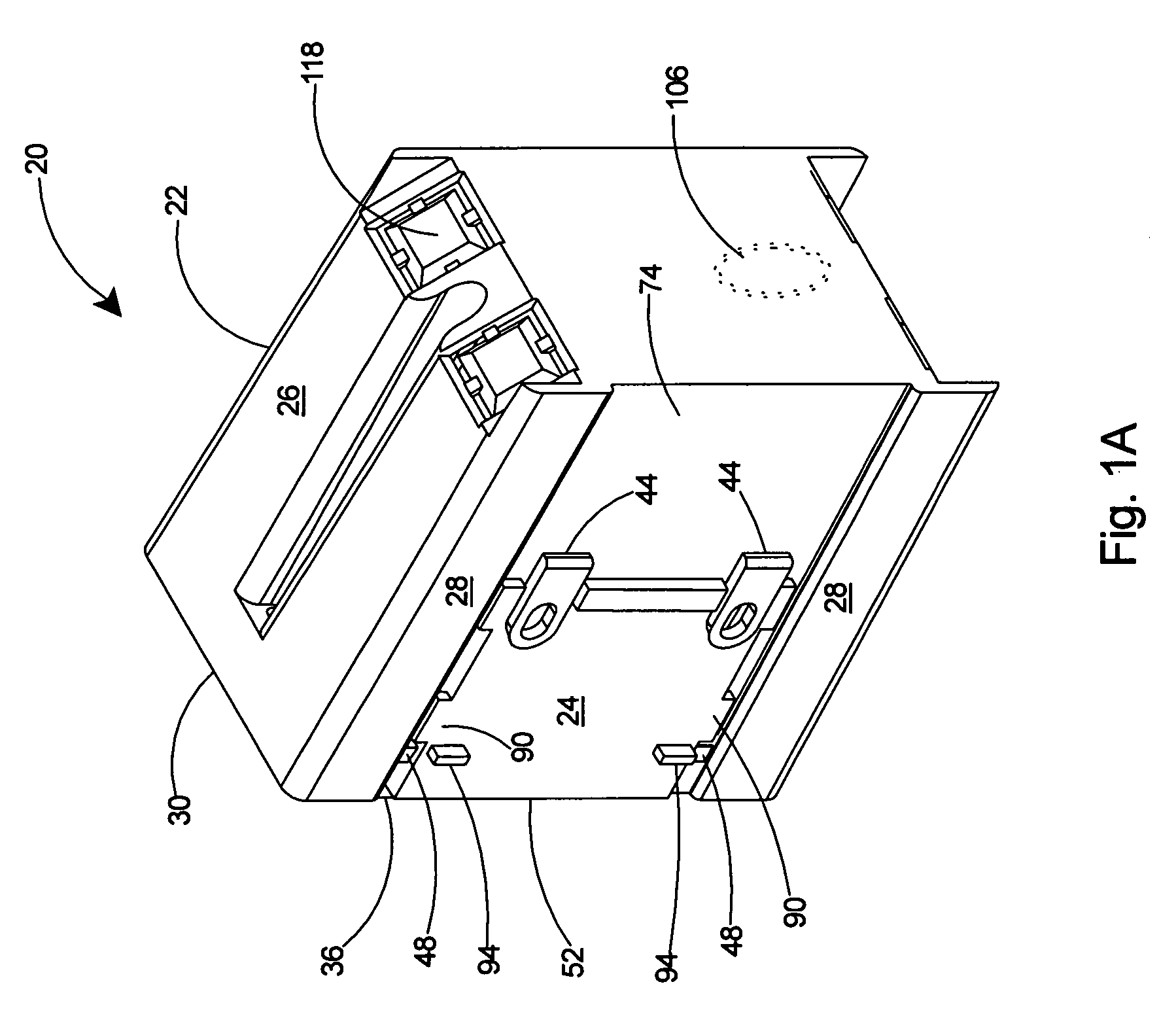Large volume electrical box with internal mounting arrangement
- Summary
- Abstract
- Description
- Claims
- Application Information
AI Technical Summary
Benefits of technology
Problems solved by technology
Method used
Image
Examples
Embodiment Construction
[0032]With reference to a preferred embodiment in FIG. 1, the present invention is an electrical box 20 comprised of a box member 22 and a sidewall insert 24 for securing an electrical device such as a duplex outlet (not shown) or similar device in a wall. The electrical box 20 is shown in FIG. 1 with the insert 24 exploded away from the box member 22 and ready to be snapped thereto. The box member 22 includes three sidewalls 26, a partial sidewall 28 extending between two of the sidewalls 26, a substantially planar front edge 30 extending along the sidewalls 26 and the partial sidewall 28, a back wall 32, and an open front 34. The box member 22 includes an open channel 36 in the partial sidewall 28 with the open channel 36 defined by an upper edge 38, lower edge 40, and rear edge 42 on the partial sidewall 28. The box member 22 further includes at least one fastener guide 44 extending from the rear edge 42 of the partial sidewall 28. The fastener guides 44 each include an aperture ...
PUM
 Login to View More
Login to View More Abstract
Description
Claims
Application Information
 Login to View More
Login to View More - R&D
- Intellectual Property
- Life Sciences
- Materials
- Tech Scout
- Unparalleled Data Quality
- Higher Quality Content
- 60% Fewer Hallucinations
Browse by: Latest US Patents, China's latest patents, Technical Efficacy Thesaurus, Application Domain, Technology Topic, Popular Technical Reports.
© 2025 PatSnap. All rights reserved.Legal|Privacy policy|Modern Slavery Act Transparency Statement|Sitemap|About US| Contact US: help@patsnap.com



